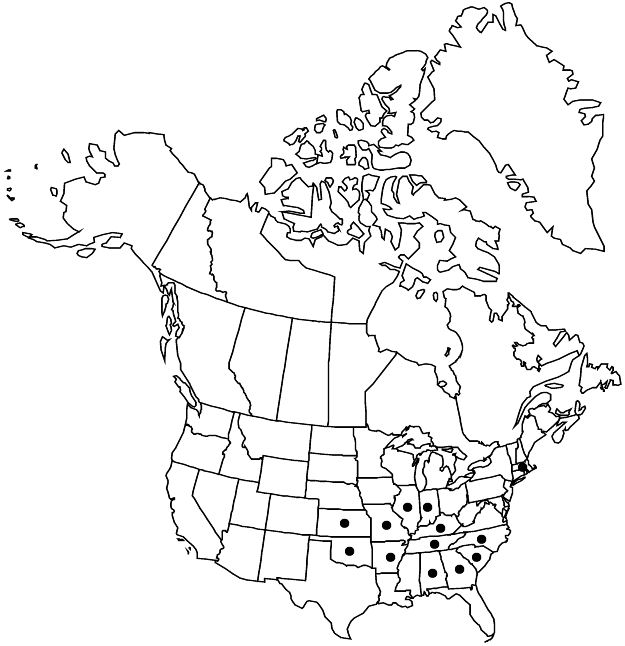Hydrangea cinerea
Bull. Torrey Bot. Club 25: 148. 1898.
Shrubs, 10–30 dm. Twigs sparsely hirsute to pilose, trichomes white. Leaves opposite; petiole 0.8–8.6 cm, sparsely to densely hirsute abaxially, densely hirsute adaxially; blade ovate, elliptic-ovate, or broadly ovate, (2.5–)4.2–14.9 × (1.7–)2.1–12 cm, unlobed, base cordate, truncate, or cuneate, margins dentate to serrate, apex acute to acuminate, abaxial surface grayish, uniformly velutinous, pilose, or tomentose, trichomes at 40× conspicuously tuberculate, 0.3–1 mm, adaxial surface green, sparsely hirsute. Inflorescences compact, 150–500-flowered, dome-shaped to hemispheric, 3.5–14.5 × 3–16.5 cm; peduncle 0.5–6 cm, sparsely to densely tomentose. Pedicels 0.8–2.8 mm, glabrous or sparsely to densely hirsute. Sterile flowers absent or present, white or greenish white, tube 4–21 mm, lobes 3–4(–5), obovate to broadly ovate, round, or elliptic, 6.5–15 × 2.5–14 mm. Bisexual flowers: hypanthium usually adnate to ovary to near its apex, rarely ca. 2/3 up ovary, 0.7–1 × 0.8–1.2 mm, strongly 8–10-ribbed in fruit, glabrous; sepals deltate to triangular, 0.3–0.5 × 0.3–0.6 mm, margins entire, apex acute to acuminate, abaxial surface glabrous; petals caducous, white to yellowish white, elliptic to narrowly ovate, 1.2–1.5 × 0.7–1.1 mm; filaments 1.8–4.5 × 0.1–0.2 mm; anthers 0.3–0.5 mm; pistils 2(–3)-carpellate, ovary completely inferior or nearly so; styles 2(–3), distinct, 0.8–1.1 mm. Capsules hemispheric, (1.2–)1.5–2.3 × (1.2–)2–2.8 mm. Seeds 0.3–0.6(–0.8) mm. 2n = 36.
Phenology: Flowering May–Jul(–Aug).
Habitat: Deciduous upland and bottomland forests, shaded cliffs, ravines, streambeds.
Elevation: 100–700 m.
Distribution

Ala., Ark., Ga., Ill., Ind., Kans., Ky., Mass., Mo., N.C., Okla., S.C., Tenn.
Discussion
Hydrangea cinerea has escaped from cultivation in Massachusetts.
The Cherokee used infusions of bark or roots as antiemetics, emetics, and cathartics, and as gynecological and liver aids (D. E. Moerman 1998).
Selected References
None.